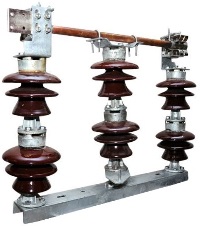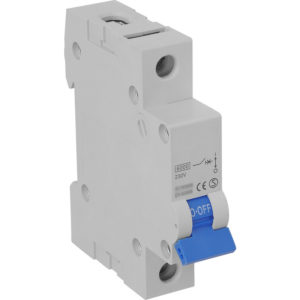Difference between Isolator and Circuit Breaker
Isolator and circuit breaker both are electrical devices that are used to open or close a circuit. But they are different based on its use, construction, and operation. Here we discuss its few main differences.
Isolator
An isolator is a device used for isolating a circuit from a power source which is similar to a simple switch, it is mechanically operated to open and close a circuit.

High Voltage circuit breaker
An isolator is used for operations in a no-load condition. Because in isolators the medium of operation is air and it doesn’t have arrangements to suppress an arc. Hence, if it is operated in the loaded condition it causes arcing. Also, if the load is heavy during operation especially during the opening of an isolator then the arc produced would be strong enough to cause damages or even results in fatal accidents.
In household isolators, this type of arcing or risk might be less but it can melt or damage the contacts of the isolator.
So, in order to operate an isolator without load, it should be closed before closing a breaker and should be opened only after opening the breaker. Switch ON or Switch OFF under loaded condition should be only carried out through a circuit breaker.
In high voltage lines, the isolator helps to visually confirm whether the electrical contacts are open or close.
- Open or Close the circuit manually
- Operated in no-load
- No arc suppression
Circuit Breaker
Like an isolator, a breaker can be also operated manually to switch on or off the circuit. But a circuit breaker is mainly designed to interrupt the circuit in the event of various faults like a short circuit, overload, earth leakage, current imbalance, etc.

Miniature circuit breaker
Also, as a circuit breaker is operated under the loaded condition it will also have an arrangement for arc quenching.
Refer to High voltage circuit breakers for a brief description of different types of high voltage circuit breakers and their arc quenching methods. Low voltage domestic breakers usually have an arc chute to extinguish the arcing. Arc chute consists of a set of parallel metal plates with air gaps between each plate, that can extend, splits, and cools the arc to extinguish it.
MCB, MCCB, RCCB are different types of domestic circuit breakers used for various applications like protection from short circuit, earth leakage, etc.
- Open or close the circuit manually or by automatic tripping.
- Operated in load or no load
- Have arc suppression